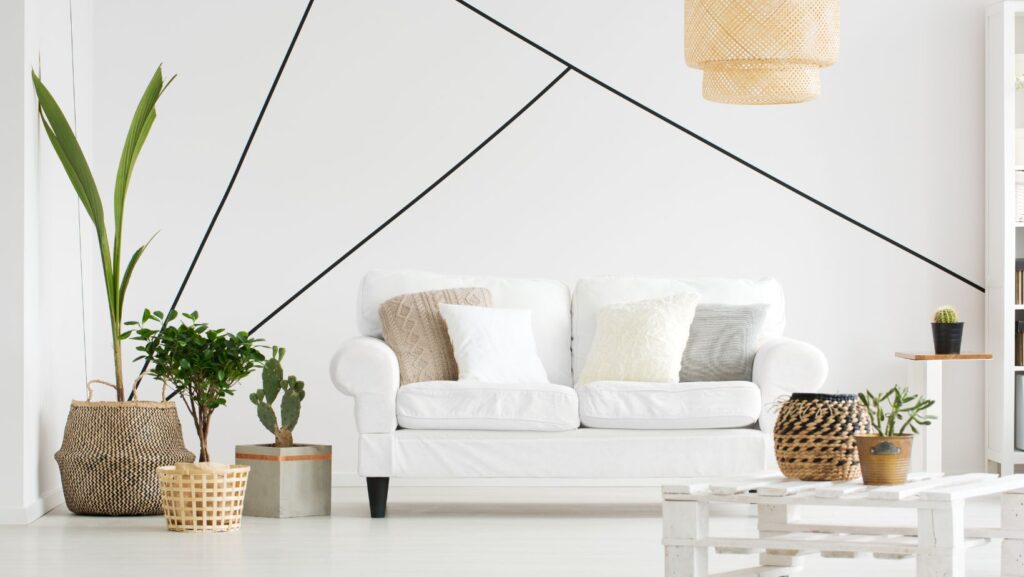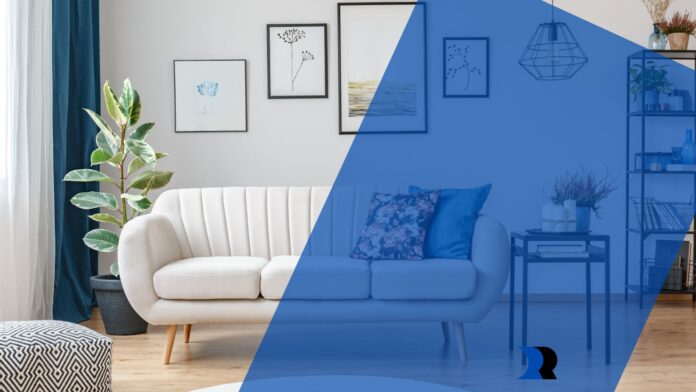Small spaces can be tricky to design. When there’s limited square footage, it’s easy for a living room to feel cramped, dark, or cluttered. But with the right approach, even the most compact room can look open, balanced, and spacious. It all comes down to how you use colour, light, and furniture placement to maximise what you have.
Key Takeaways
- Light, colour, and proportion can make any small room feel larger.
- Smart furniture choices prevent clutter and improve flow.
- Mirrors, lighting, and layout can completely change how space feels.
1. Choose Light Colours for an Airy Look
Colour sets the tone for how large or small a space feels. Light, neutral shades such as white, cream, soft grey, and pale beige reflect light and make a room appear more open. Even if you prefer darker tones, consider using them only as accents – cushions, artwork, or rugs – while keeping the walls and larger furniture light.
A simple palette helps unify the space, which creates a visual sense of continuity. When too many colours compete, rooms can feel smaller than they are. Using a limited range of tones keeps everything cohesive and calming.
If you want inspiration for how subtle colour shifts can make a space feel brighter, online communities like FurnitureFaves often feature real-world living room makeovers that show exactly how lighter palettes open up tight layouts.
2. Embrace Natural Light (and Fake It When You Can’t)
Light has a dramatic effect on perception. Natural light instantly makes a room feel bigger, cleaner, and more inviting. Avoid heavy drapes that block windows – instead, use sheer curtains that allow sunlight to flow through while maintaining privacy.
If your room doesn’t get much natural light, use artificial lighting strategically. Layer ceiling fixtures with floor lamps and wall sconces to mimic daylight and reduce harsh shadows. A well-lit space always feels more spacious than a dim one, no matter the actual size.
3. Keep Furniture Scaled to the Room
Proportion matters. Oversized furniture can overwhelm a small room, while pieces that are too small make it feel unfinished. Look for sofas and chairs with clean lines and exposed legs – this lets light pass underneath and creates the illusion of more floor space.
Multi-functional furniture, like storage ottomans or nesting tables, also helps cut down on clutter. When every piece has a purpose, the room feels organised rather than crowded.
As a general rule, leave a few inches of space between furniture and walls. It may seem counterintuitive, but even small gaps make a room feel less boxed in.
4. Use Mirrors and Glass to Reflect Space
Mirrors are one of the oldest interior design tricks for a reason – they double light and visually expand a room. Placing a large mirror opposite a window bounces natural light around, while smaller mirrors can be used to create focal points.
Glass and acrylic furniture also contribute to an open look. Transparent coffee tables, shelving, or side tables reduce visual clutter and maintain sightlines across the room. These small swaps help make limited space feel breezy and open.
5. Control Clutter With Smart Storage
Even the best-designed small room can feel tight if it’s full of visual noise. Storage solutions are the unsung heroes of compact living spaces. Choose furniture that conceals clutter – ottomans with hidden compartments, sofas with built-in storage, or floating shelves that free up floor area.
Keeping surfaces clear lets the eye rest, which is what makes a room feel peaceful. A tidy space automatically feels bigger because it’s easier to process visually.

Decluttering also lets your favourite design features stand out – whether that’s a beautiful sofa, textured rug, or piece of artwork.
6. Mix Textures Without Overcrowding
Texture adds dimension to small spaces without needing extra furniture. Use a combination of soft and smooth surfaces to create contrast and visual interest.
A wool rug paired with a linen sofa and a few velvet cushions feels rich but not overdone. The key is moderation – two or three textures per room are usually enough.
Adding natural elements, such as wood, plants, or woven baskets, can soften edges and make the space feel grounded and comfortable. Just make sure every piece serves a purpose – clutter is the fastest way to undo your design work.
7. Wrapping It Up
Designing a small living room isn’t about having less – it’s about doing more with what you have. When you prioritise light, proportion, and texture, you can transform even the tightest spaces into stylish, comfortable retreats.
Start with a simple palette, let natural light shine through, and use mirrors and smart storage to enhance the sense of space. Most importantly, avoid overcrowding – negative space is your best friend in compact interiors.
With a few intentional choices, you can make any small living room feel bigger, brighter, and beautifully functional – proof that great design has nothing to do with square footage.


